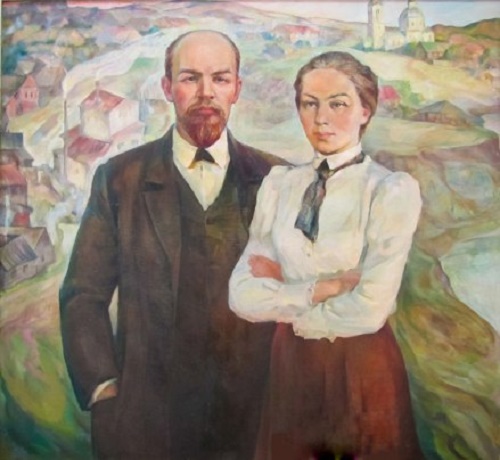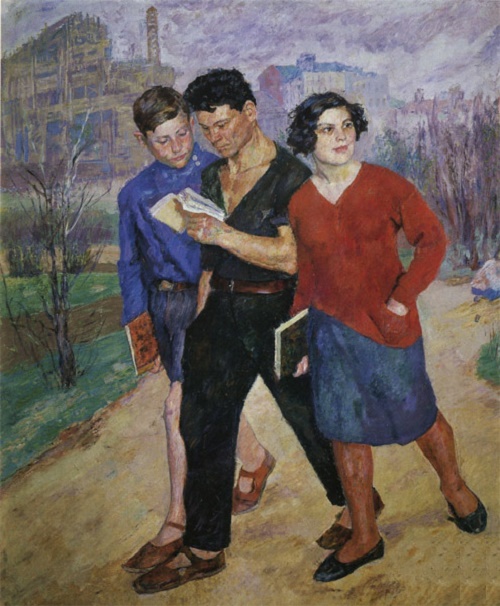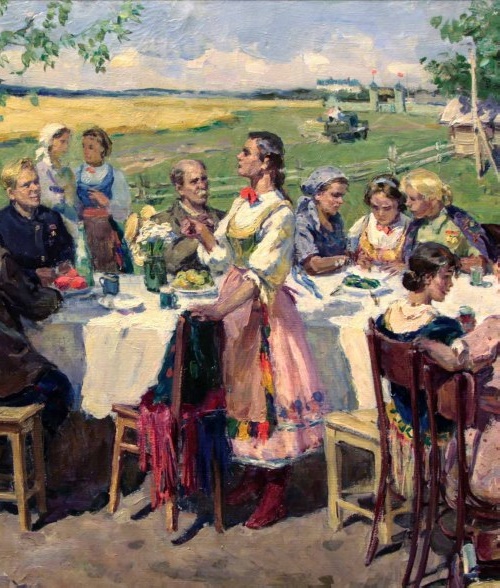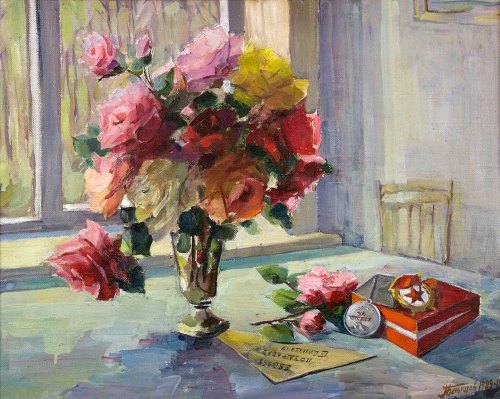Soviet socialist realism artist Fyodor Shurpin
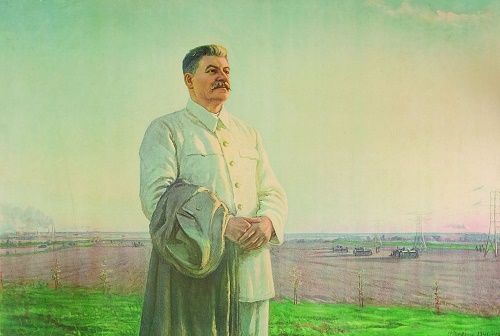
The morning of our homeland. 1949. Oil Painting by Soviet socialist realism artist Fyodor Shurpin. 27 September, 1904 (Smolensk region) – 9 January, 1972 (Moscow)
According to the known legend, Stalin, at the Soviet Art exhibition called his son Vasily to this picture and said, “Do you think you’re Stalin, or you think I am Stalin?!?!” And he pointed to the canvas: “No, here is Stalin.”
“The morning of our homeland” 1949 oil painting of a little-known Soviet socialist realism artist Fyodor Shurpin (1904-1972), depicting Joseph Stalin. The work on the painting to the 70th anniversary of Stalin took place in 1946-1948. After the exposure of the personality cult of Stalin, the painting was called “The last train has left.” In the foreground – pensive Stalin in a white paramilitary jacket, without orders, with the coat on his arm. Behind the leader – stretching beyond the horizon the vast expanses of the motherland with grace collective farm fields, high-voltage transmission masts, smoking chimneys of factories in the industrial cities. And towering over the whole Soviet country the figure of Stalin – “Great Leader, wise and caring.”
Read more »


